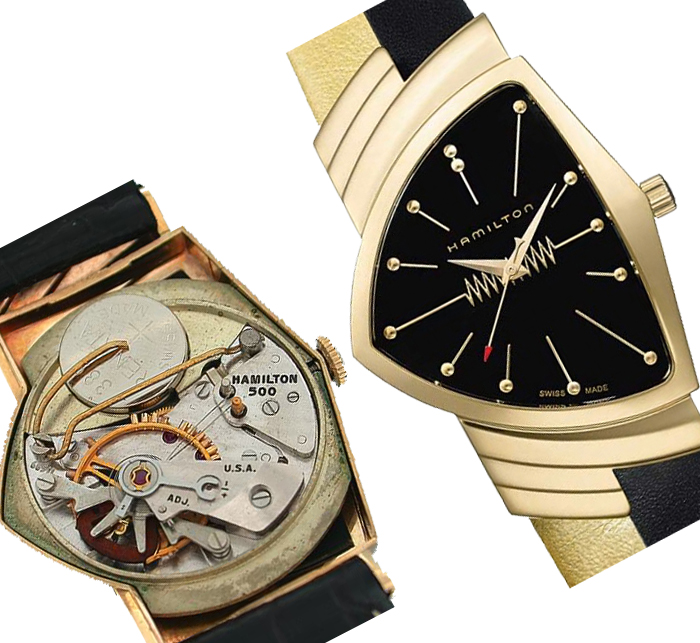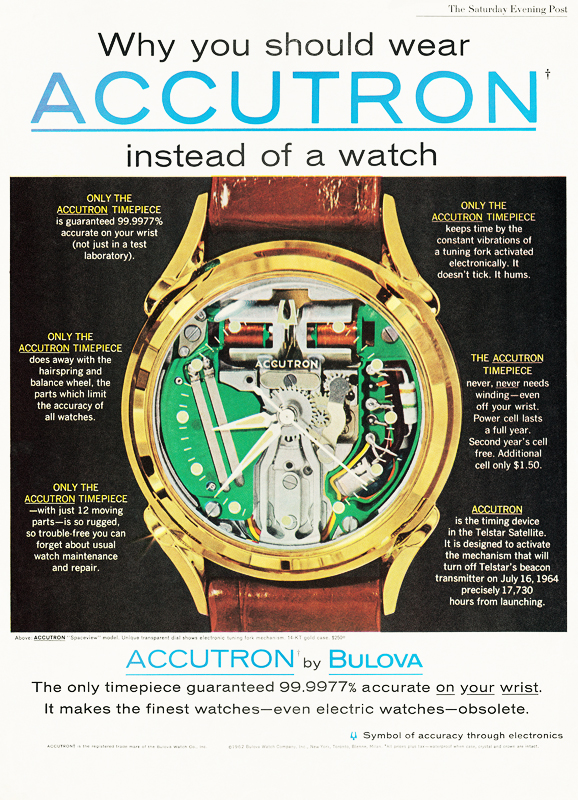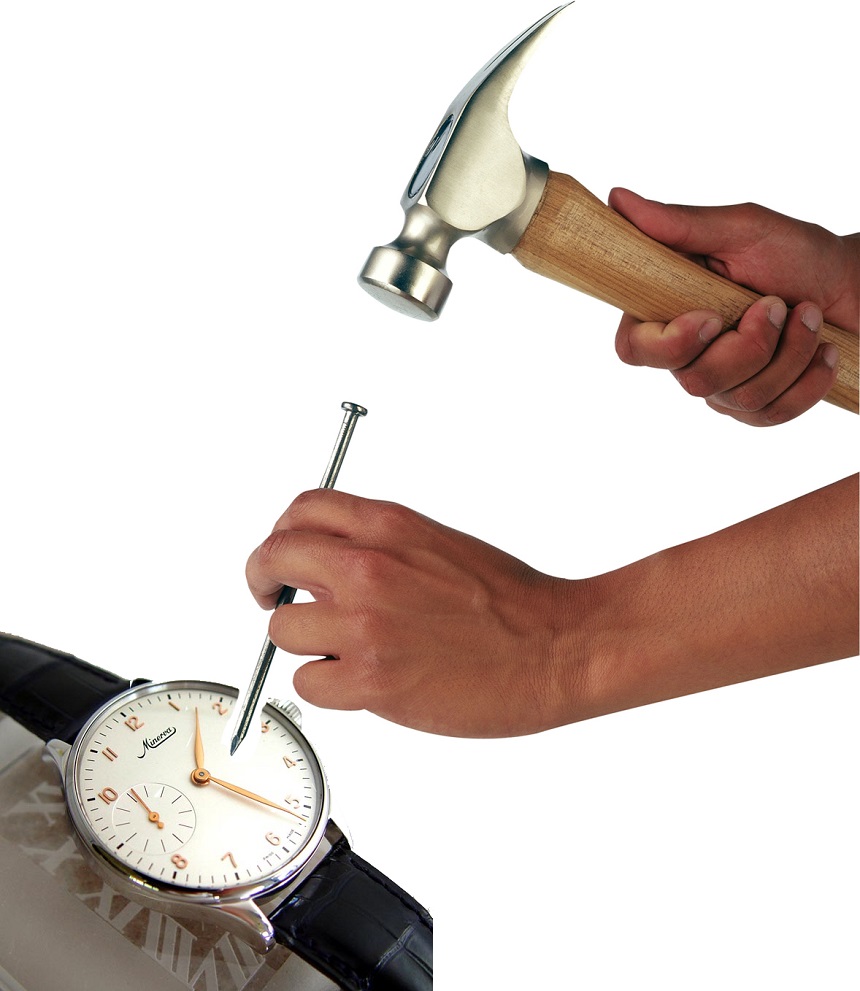
The main problem with this new battery concept for energy was that the hearing aid batteries leaked or were inefficient for the mechanism and the watches didn’t really always keep great time.
Then in early 1960s, the Bulova watch company of New York made a giant leap in technology by introducing the Bulova “Accutron” watch. This extraordinary watch solved the problem of the inconsistent energy from the battery by using a 360-hertz tuning fork instead of the balance wheel. A battery and a one-transistor electronic oscillator circuit powered this tuning fork. This was the bridge between the Hamilton Electric and the modern day quartz movement. The Accutron boasted that it was accurate to within a minute a month…an amazing leap in timekeeping accuracy and the ultimate state of the art.
There was no problem with this energy source and this new watch design, and it lasted a decade unchallenged.

The final step in the quartz story took place around 1970 when Seiko of Japan introduced its first mass-produced quartz movement watch. Unfortunately for Bulova, but a “debatable” giant step forward for the watch industry, this Japanese movement was more accurate, it boasted no less than plus or minus 15 seconds per month accuracy, and was very cheap to produce. The final nail in the coffin for the mainspring wound mechanical watch was thus born.
Luckily for us mechanical watch enthusiasts, the Swiss watch industry fought back from the depths of oblivion in the 1990s and started to once again make beautiful mechanical masterpieces that demanded our attention and thus was reborn the “ancient” technology of the hand wound and automatic mainspring driven energy source watch.

So let’s give our quartz cousins a little respect. They exist from our desire to be progressive and reflect that for watch companies, like everyone else, “necessity is the mother of invention.” Quartz watches replaced watches for the mainstream. Even the technology we use today such as mobile phones and computers contain quartz-based timekeepers (They can even receive signals to update their time).
What quartz timing technology did is force mechanical watches to be better, more interesting, and due to much lower production, unfortunately more expensive in order to remain in production. Perhaps in another universe watch lovers of high acclaim would prefer quartz to mechanical, but the former’s ability to be cheaply and mass produced easily defeated them from having any true connoisseurship status.
Richard Paige, a fourth generation watchmaker, is the former owner and co-founder of Timezone.com, and several watch retail stores in California. Currently Richard has designed and manufactured his own line of watches using antique and vintage American Pocket watch movements: rpaigewatch.com
